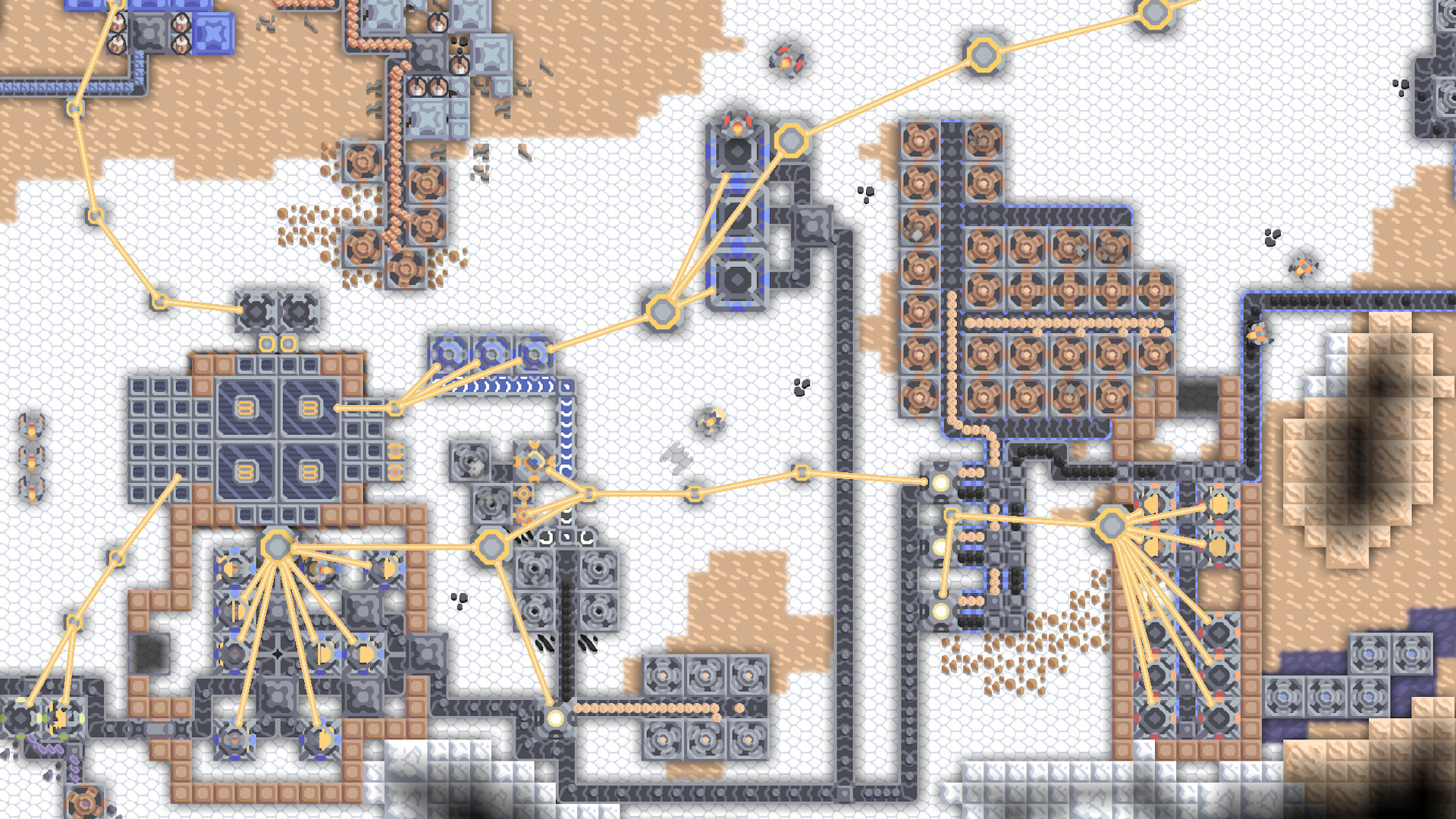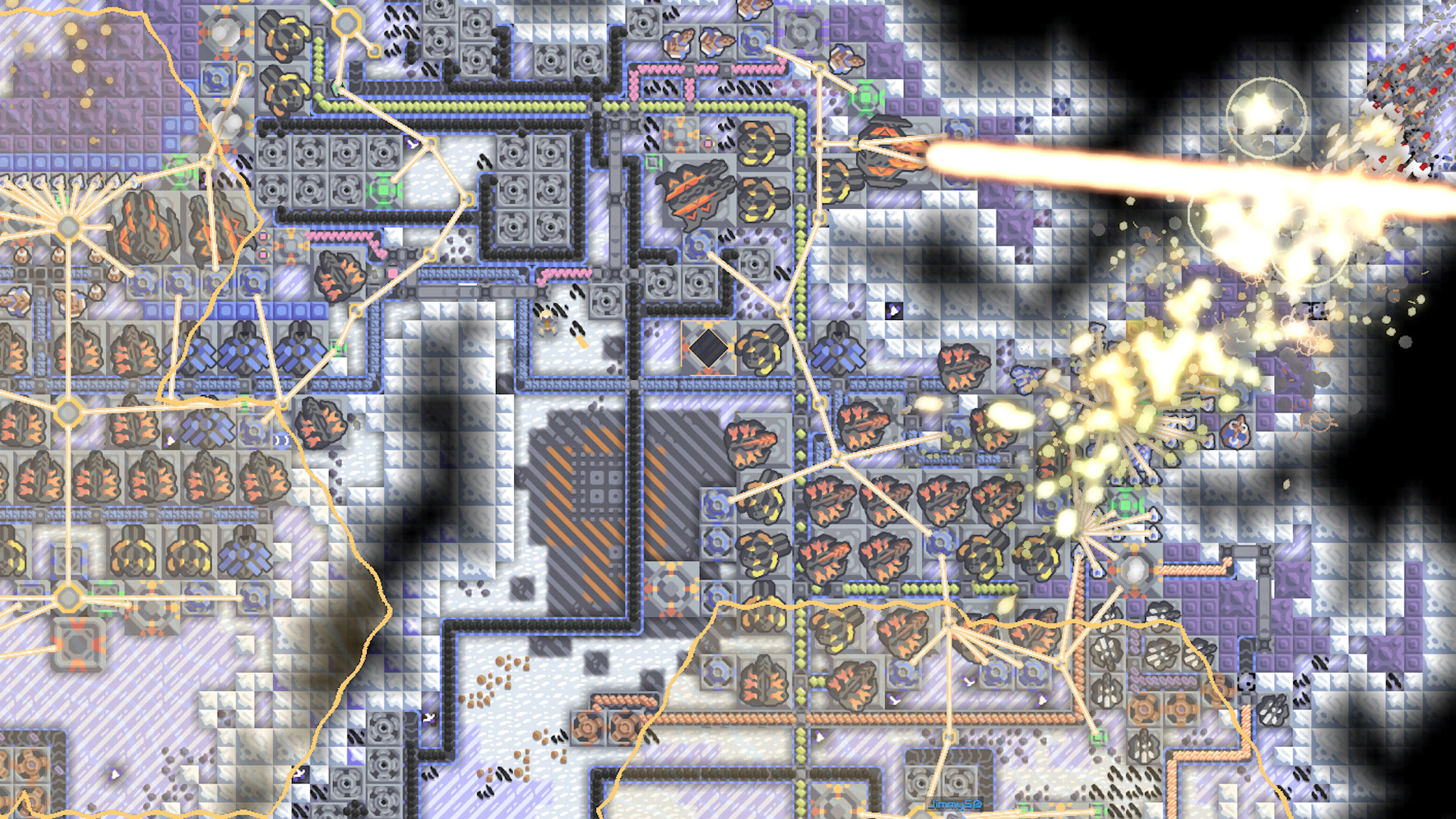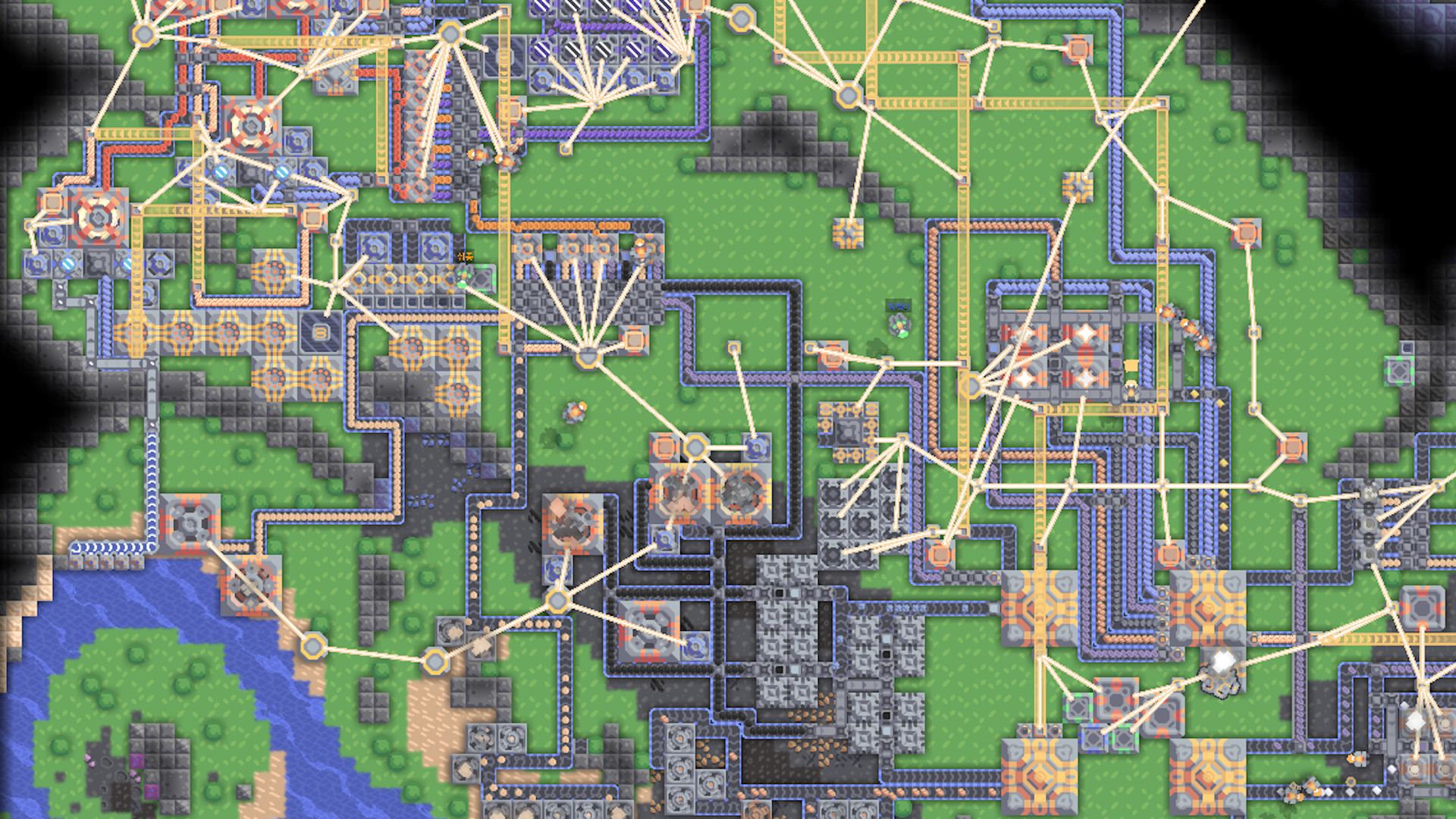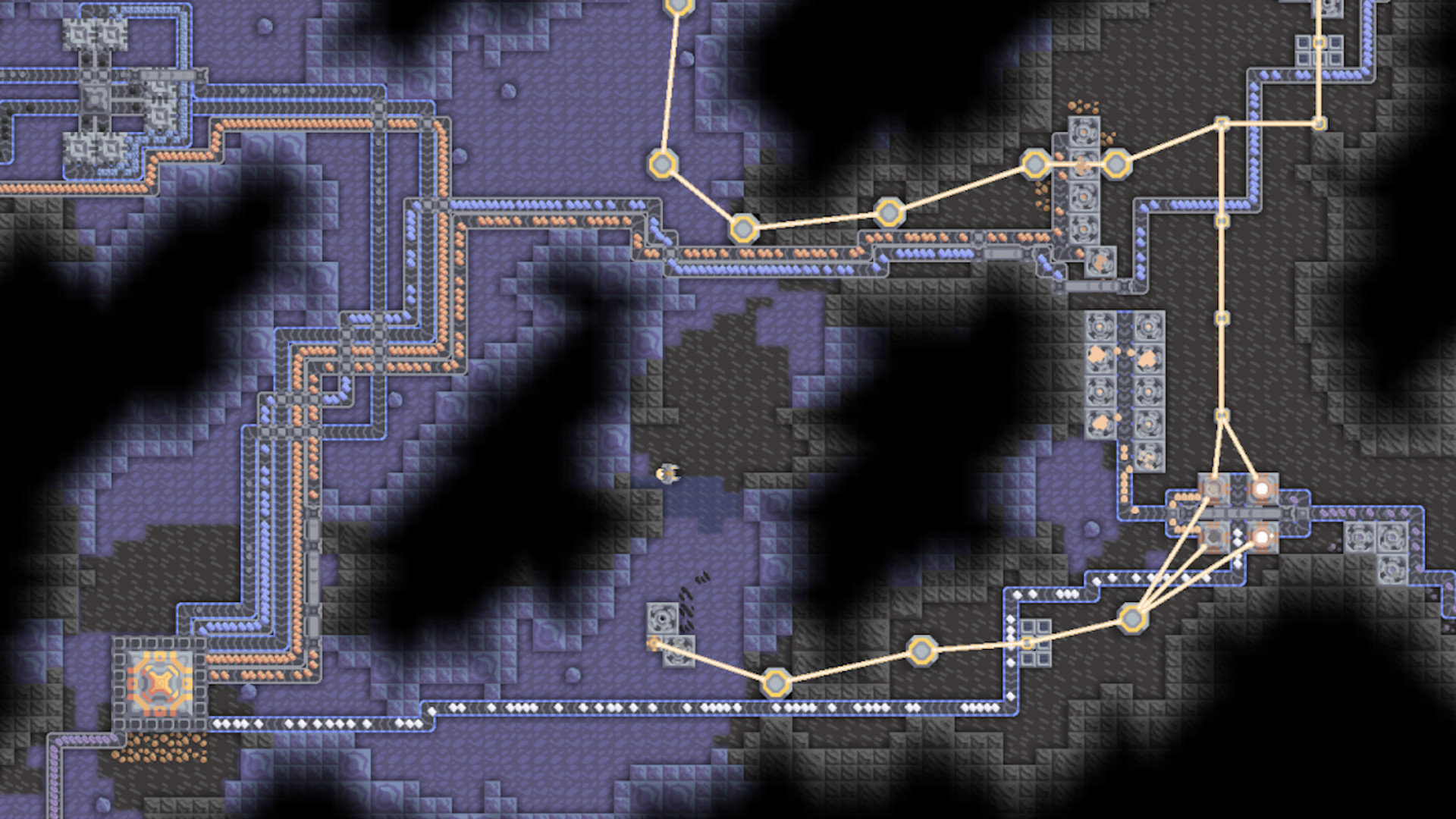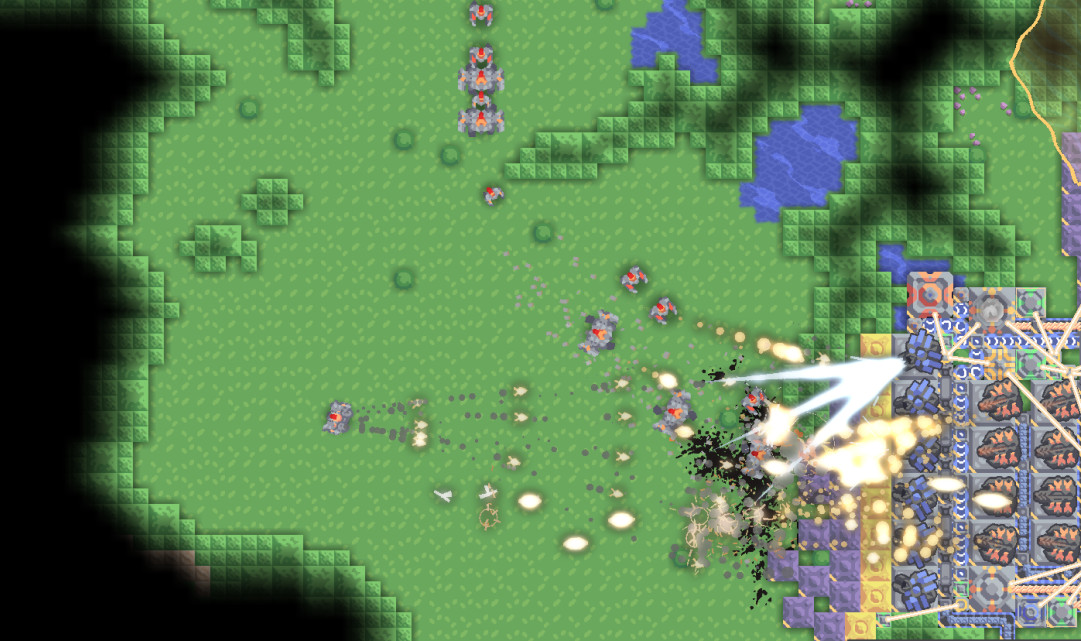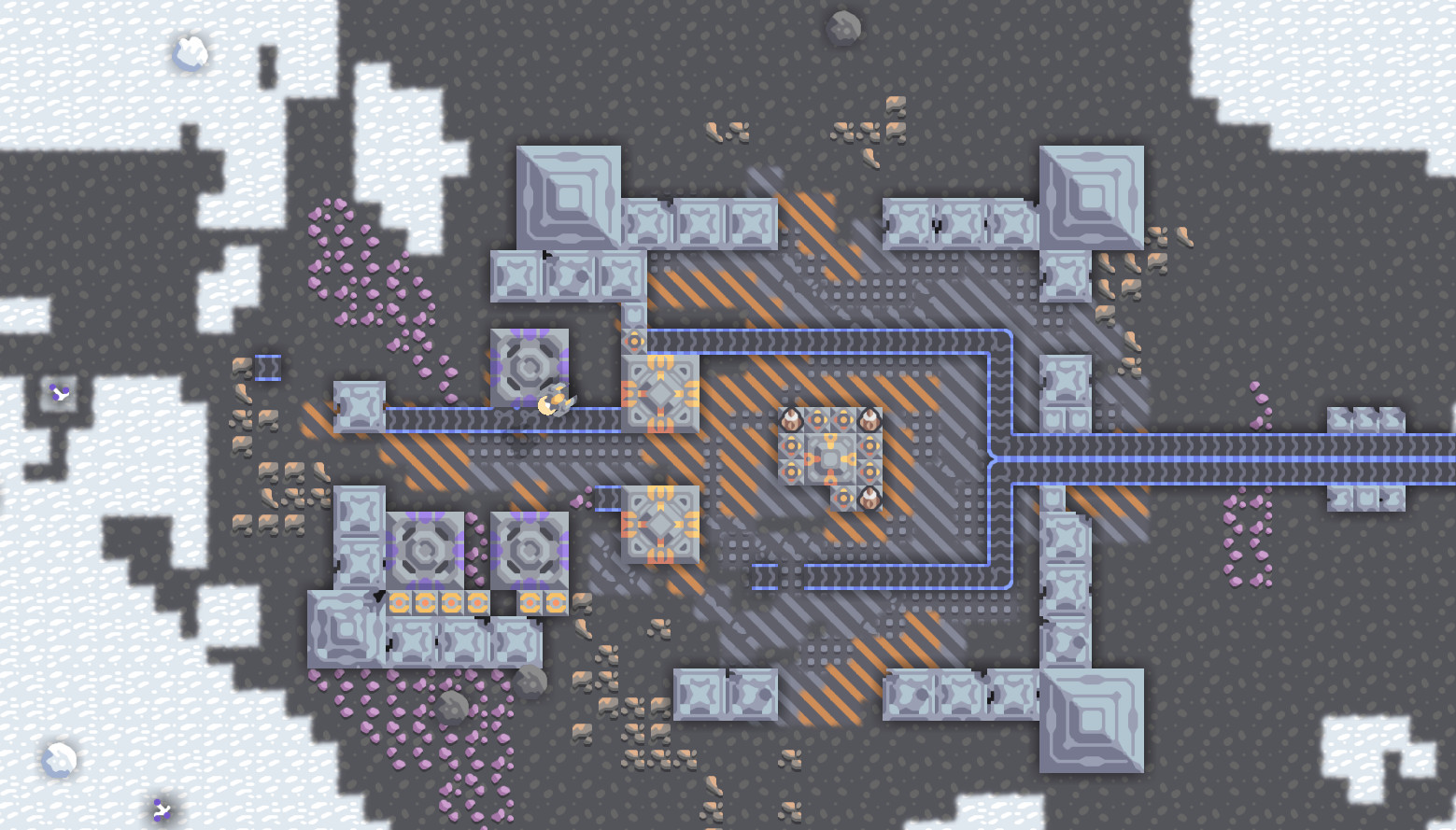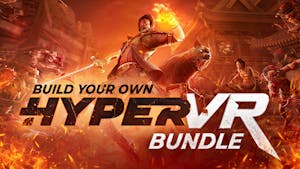Create elaborate supply chains of conveyor belts to feed ammo into your turrets, produce materials to use for building, and defend your structures from waves of enemies. Play with your friends in cross-platform multiplayer co-op games, or challenge them in team-based PvP matches.


Gameplay
- Create elaborate drills and conveyor designs to move resources into your Core
- Use production blocks to create a wide variety of advanced materials
- Build drones for automatically mining resources, assisting in building and protecting your base
- Distribute liquids and fight constant challenges, like outbreaks of fire or enemy flier raids
- Get the most out of your production by supplying optional coolant and lubricant
Campaign
- Advance through 12 replayable built-in zones with randomized spawn points
- Collect and launch resources
- Research new blocks to fuel progress
- Configure launch loadouts to bring resources to each zone
- Variety of mission objectives and goals
- Invite your friends to complete missions together
- 120+ technology blocks to master
- 19 different types of drones, mechs and ships
- 50+ achievements to complete
Gamemodes
- Survival: Build turrets to defend from enemies in tower-defense based gameplay. Survive as long as possible, optionally launching your core to use your collected resources for research. Prepare your base for intermittent attacks from airborne bosses.
- Attack: Build factories for units to destroy the enemy cores, while simultaneously defending your base from waves of enemy units. Create a variety of different types of support and offensive unit to assist you in your goals.
- PvP: Compete with other players on up to 4 different teams to destroy each other's cores. Create units, or attack other bases directly with your mechs.
- Sandbox: Play around with infinite resources and no enemy threat. Use sandbox-specific item and liquid source blocks to test out designs, and spawn in enemies on request.
Custom Games & Cross-Platform Multiplayer
- 12 built in maps for custom games, in addition to campaign
- Play Co-op, PvP or sandbox
- Join a public dedicated server, or invite friends to your own private session
- Customizable game rules: Change block costs, enemy stats, starting items, wave timing and more
- Mix&match gamemodes: Combine PvP and PvE gamemodes together
Custom Map Editor
- Paint terrain with an editor UI
- Edit and preview structures in-game
- Configurable tool modes: Change how each tool functions
- Powerful map generation system, with many different types of filters for procedural manipulation of terrain
- Apply noise, distortion, smoothing, erosion, symmetry, ore generation and random terrain to your maps
- Randomize and configure ore generation, as well as placement of river and resource tiles
- Configure enemy wave layouts
- Share exported maps on the Steam Workshop
- Customize base map rules
- Use 75+ different environmental blocks
6.0 Progress Report #2

Instead of being stored in a vague centralized location, all resources collected are now local to their cores on the ground. Resources cannot be "launched" anywhere except other sectors. This means that storage is limited by the amount of sectors you have captured, and the types of cores those sectors have.

Nearly all content is now required for research: Items, liquids and units have to be researched before they can be produced. While the amount of resources needed for research is significantly increased, this should not increase grinding, as all sectors under your control can passively generate resources while you play.

Starting with Crawlers, a new branch of insect-like multi-legged units has been created.

Beginning with the second tier, these units are able to walk over most solid blocks. They specialize in sapping and splash-damage attacks. Spiroct and Arkyid units are able to pull enemies closer and leech health from them.


3 tiers of naval units have been added. These are made in a special naval factory, place-able only on water.

Compared to other units of similar tiers, these units are much faster and stronger, to make up for their reduced coverage. T3 naval units possess long range artillery, which can be devastating to coastal structures.
T4+T5 naval combat units may be added as well. Support naval units are also a possibility for future updates.
The "boss"-class units from 5.0 have all been re-implemented, renamed and cleaned up. New ones have also been implemented. The following previews should speak for themselves.



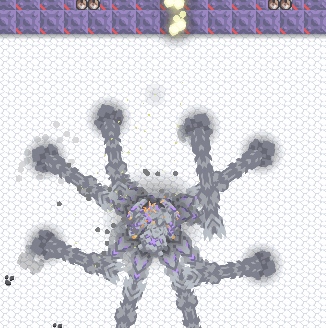
(yes, these units can be built in normal gameplay)
The long-awaited logic system has been implemented. It is still missing some important features, but is currently very much usable.

This system is based around several tiers of processors, which execute instructions at different rates - similar to assembly language, in some respects, but vastly simplified.

Logic is "programmed" by putting together sequences of instructions that manipulate variables and read/write from blocks. No programming knowledge is required, although the "code" can be exported as text and edited in an external text editor.

Each processor can be "linked" to other blocks. The linked blocks become variables in the logic UI that can be controlled in various ways: for example, most blocks can be disabled to make them stop moving/functioning, and turrets can be manually set to fire at a specific position. Block state, such as item count or power balance can also be read by the processor.
In addition to processors, three new types of blocks have been added for logic-related purposes: displays, memory cells and switches.

These can be used to display basic vector graphics when connected to a processor. Users have already made use of them for power and item visualization. Other applications, like graphical games, are possible as well.

Raster (typical PNG) images can technically be displayed as well, but with vector displays, the process is very inefficient and not practical outside of sandbox. The image shown here is drawn pixel-by-pixel using code generated from a PNG with an external script.
These act as additional, indexable storage for processors. Each cell holds a certain amount of numbers (currently, 64) which can be read and written to using numbers 0-63. If you've programmed before, this is like an array of numbers. Processors can link to the same memory cell, facilitating inter-processor communication.

These are simple blocks that do nothing on their own, but can be toggled by the player in order to do something with a processor. For example, a processor can read the "enabled" state of a switch and use it to toggle a conveyor on or off.

Shown above is a multiplayer pong game, with inputs handled by switches. (The design shown was made by Xusk).
These processors are currently only able to control blocks. In the future, units will be controllable as well.
It is also worth noting that, to prevent various problems, processors can only read or write to blocks that are (manually) connected to them. Things such as self-replicating processor-powered bases are currently not possible, but may be in the future.
The new tentative release date for 6.0 is somewhere around December 2020. This may change if unexpected problems arise, but hopefully that should be enough time for me to finish everything planned for this release.
This is the second development update concerning 6.0, the next major update for Mindustry. For the first part, see here .
Many significant issues and bugs have been fixed since the last post. The game is now stable enough to play normally in multiplayer without game-breaking crashes or bugs, and most non-campaign content has been implemented. An alpha build may be released to a separate Steam branch in the coming couple of weeks.
Current Progress
Campaign
Research & Resources

Instead of being stored in a vague centralized location, all resources collected are now local to their cores on the ground. Resources cannot be "launched" anywhere except other sectors. This means that storage is limited by the amount of sectors you have captured, and the types of cores those sectors have.

Nearly all content is now required for research: Items, liquids and units have to be researched before they can be produced. While the amount of resources needed for research is significantly increased, this should not increase grinding, as all sectors under your control can passively generate resources while you play.
Units
Walker Units

Starting with Crawlers, a new branch of insect-like multi-legged units has been created.

Beginning with the second tier, these units are able to walk over most solid blocks. They specialize in sapping and splash-damage attacks. Spiroct and Arkyid units are able to pull enemies closer and leech health from them.

Naval Units

3 tiers of naval units have been added. These are made in a special naval factory, place-able only on water.

Compared to other units of similar tiers, these units are much faster and stronger, to make up for their reduced coverage. T3 naval units possess long range artillery, which can be devastating to coastal structures.
T4+T5 naval combat units may be added as well. Support naval units are also a possibility for future updates.
Boss Units
The "boss"-class units from 5.0 have all been re-implemented, renamed and cleaned up. New ones have also been implemented. The following previews should speak for themselves.




(yes, these units can be built in normal gameplay)
Logic
The long-awaited logic system has been implemented. It is still missing some important features, but is currently very much usable.

This system is based around several tiers of processors, which execute instructions at different rates - similar to assembly language, in some respects, but vastly simplified.

Logic is "programmed" by putting together sequences of instructions that manipulate variables and read/write from blocks. No programming knowledge is required, although the "code" can be exported as text and edited in an external text editor.

Each processor can be "linked" to other blocks. The linked blocks become variables in the logic UI that can be controlled in various ways: for example, most blocks can be disabled to make them stop moving/functioning, and turrets can be manually set to fire at a specific position. Block state, such as item count or power balance can also be read by the processor.
In addition to processors, three new types of blocks have been added for logic-related purposes: displays, memory cells and switches.
Displays

These can be used to display basic vector graphics when connected to a processor. Users have already made use of them for power and item visualization. Other applications, like graphical games, are possible as well.

Raster (typical PNG) images can technically be displayed as well, but with vector displays, the process is very inefficient and not practical outside of sandbox. The image shown here is drawn pixel-by-pixel using code generated from a PNG with an external script.
Memory Cells
These act as additional, indexable storage for processors. Each cell holds a certain amount of numbers (currently, 64) which can be read and written to using numbers 0-63. If you've programmed before, this is like an array of numbers. Processors can link to the same memory cell, facilitating inter-processor communication.
Switches

These are simple blocks that do nothing on their own, but can be toggled by the player in order to do something with a processor. For example, a processor can read the "enabled" state of a switch and use it to toggle a conveyor on or off.

Shown above is a multiplayer pong game, with inputs handled by switches. (The design shown was made by Xusk).
Limitations
These processors are currently only able to control blocks. In the future, units will be controllable as well.
It is also worth noting that, to prevent various problems, processors can only read or write to blocks that are (manually) connected to them. Things such as self-replicating processor-powered bases are currently not possible, but may be in the future.
Release Time Frame
The new tentative release date for 6.0 is somewhere around December 2020. This may change if unexpected problems arise, but hopefully that should be enough time for me to finish everything planned for this release.
[ 2020-09-09 01:36:39 CET ] [Original Post]
Minimum Setup
- Memory: 1 GB RAM
- Graphics: Anything with OpenGL 2.0 Support
- Storage: 100 MB available space
GAMEBILLET
[ 6443 ]
GAMERSGATE
[ 3706 ]
MacGamestore
[ 5362 ]
FANATICAL BUNDLES
HUMBLE BUNDLES
by buying games/dlcs from affiliate links you are supporting tuxDB

